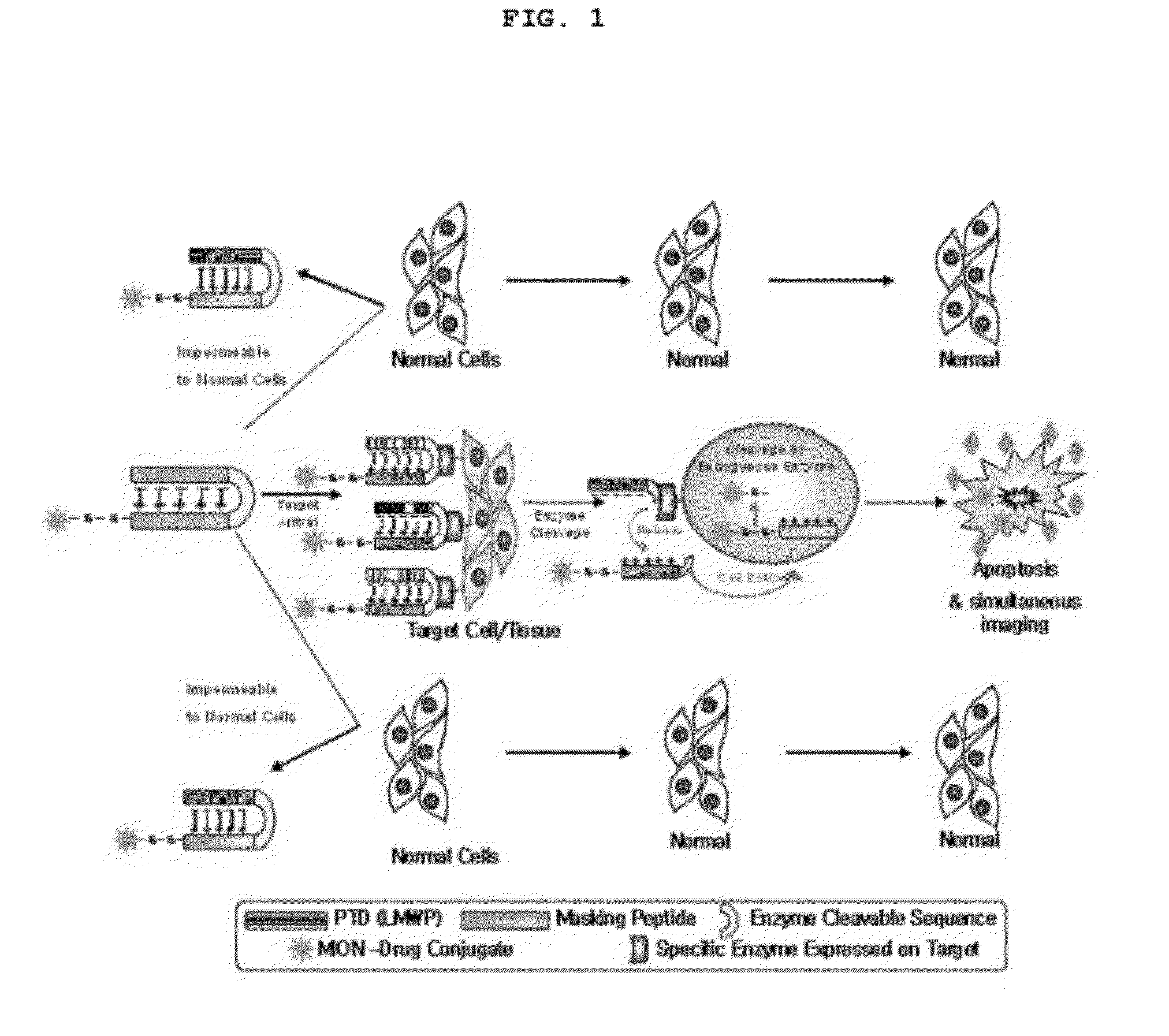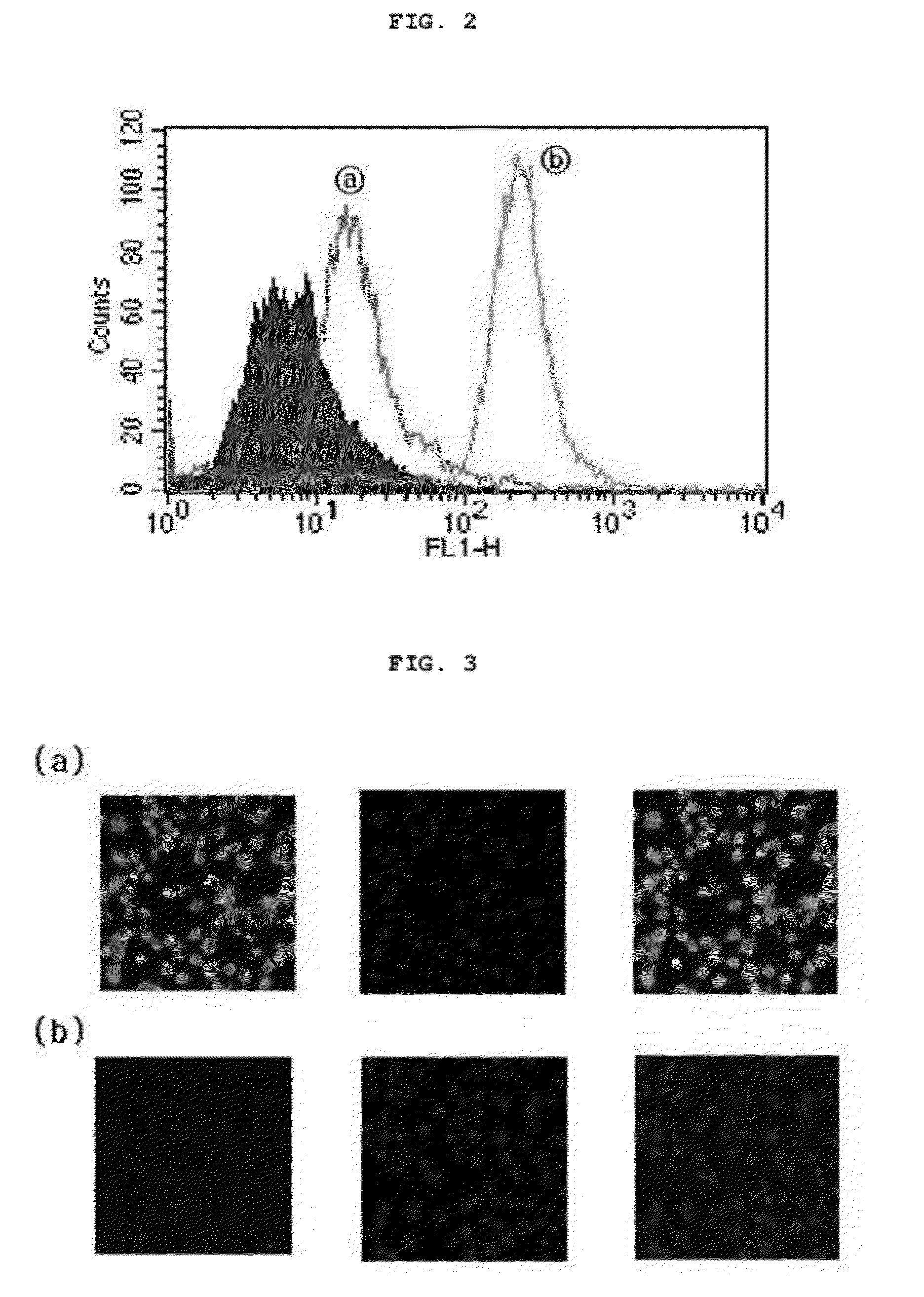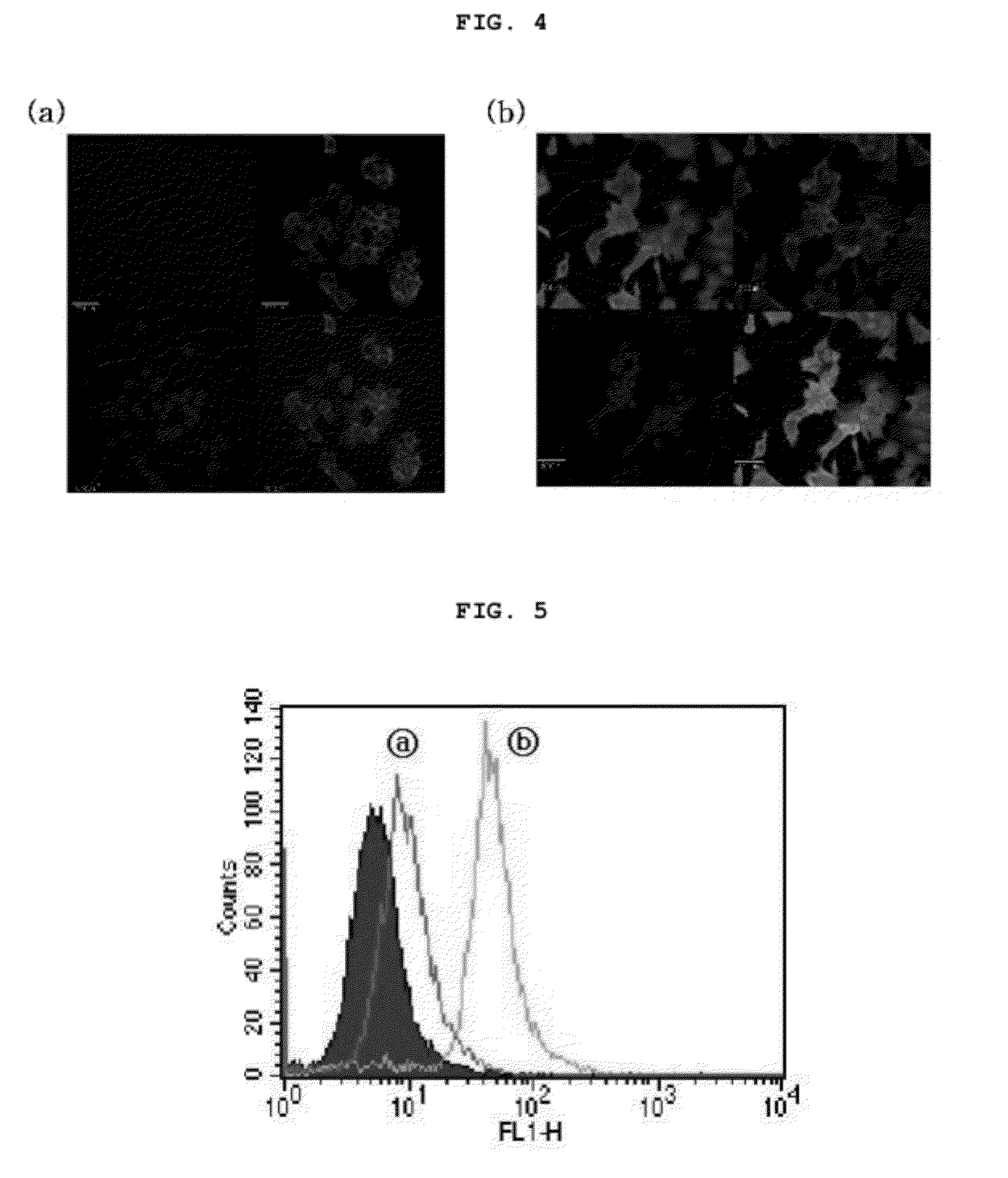Target-activated cell/tissue-penetrating peptide for delivery of impermeable compounds and use thereof
a target-activated cell and tissue-penetrating technology, which is applied in the direction of peptide/protein ingredients, peptide sources, immunological disorders, etc., can solve the problems of side effects and low image quality
- Summary
- Abstract
- Description
- Claims
- Application Information
AI Technical Summary
Benefits of technology
Problems solved by technology
Method used
Image
Examples
example 1
Preparation of Target-Activated Cell / Tissue-Penetrating Peptide
[0056]A target-activated cell / tissue-penetrating peptide was synthesized by an F-moc solid phase method using a peptide synthesis system such that it contains, in order from the N-terminal region, a masking domain (EEEEEEE; SEQ ID NO: 27), a spacer (PLGLAG; SEQ ID NO: 25) which is cleaved by MMP, and LMWP as a protein transduction domain (PTD).
[0057]NH2-EEEEEEEPLGLAG-VSRRRRRRGGRRRR-C-COONH2 (SEQ ID NO: 28)
[0058]The synthesized peptide sequence was cleaved from resin, washed and freeze-dried, after which it was purified by liquid chromatography. The molecular weight of the purified peptide was measured by MALDI analysis.
example 2
Preparation of Target-Activated Cell / Tissue-Penetrating Peptide-Drug Conjugate
[0059]The target-activated cell / tissue-penetrating peptide prepared in Example 1 contained cystein, and thus had a free sulfhydryl group. Thus, the cystein was used as a crosslinking agent to induce chemical bonding with the anticancer protein gelonin.
[0060]The surface modification of gelonin was performed by attaching a thiol (—SH) group to the carboxyl group on the surface. One thiol (—SH) molecule of the particle surface was allowed to react with 10 thiol (—SH) molecules of the peptide at 4° C. for 12 hours, after which unreacted molecules were removed by ultrafiltration. Then, the remaining material was freeze-dried, thus obtaining a target-activated cell / tissue-penetrating peptide-gelonin conjugate.
example 3
Tumor Cell-Penetrating Ability Of Target-Activated Cell / Tissue-Penetrating Peptide
[0061]In order to examine the cell-penetrating ability of the target-activated cell / tissue-penetrating peptide prepared in Example 1, the C-terminal region of the prepared peptide was labeled with the fluorescence marker FITC, and the fluorescence-labeled peptide was inoculated into each of a normal cell line (ATCC) and a tumor cell line (CT-26, KCLB (Korea cell line bank) 80009).
[0062]1 hour after the inoculation, the fluorescence intensities of the cell lines were measured using FACS, and the results of the measurement are shown in FIG. 2. As can be seen therein, an increase in the fluorescence intensity of the tumor cells was observed. In FIG. 2, “{circle around (a)}” indicates the fluorescence intensity of the normal cell line, and “{circle around (b)}” indicates the fluorescence intensity of the tumor cell line.
[0063]Also, whether the peptide penetrated into the cells was observed by a confocal la...
PUM
| Property | Measurement | Unit |
|---|---|---|
| impermeable | aaaaa | aaaaa |
| molecular weight | aaaaa | aaaaa |
| length | aaaaa | aaaaa |
Abstract
Description
Claims
Application Information
 Login to View More
Login to View More - R&D
- Intellectual Property
- Life Sciences
- Materials
- Tech Scout
- Unparalleled Data Quality
- Higher Quality Content
- 60% Fewer Hallucinations
Browse by: Latest US Patents, China's latest patents, Technical Efficacy Thesaurus, Application Domain, Technology Topic, Popular Technical Reports.
© 2025 PatSnap. All rights reserved.Legal|Privacy policy|Modern Slavery Act Transparency Statement|Sitemap|About US| Contact US: help@patsnap.com



